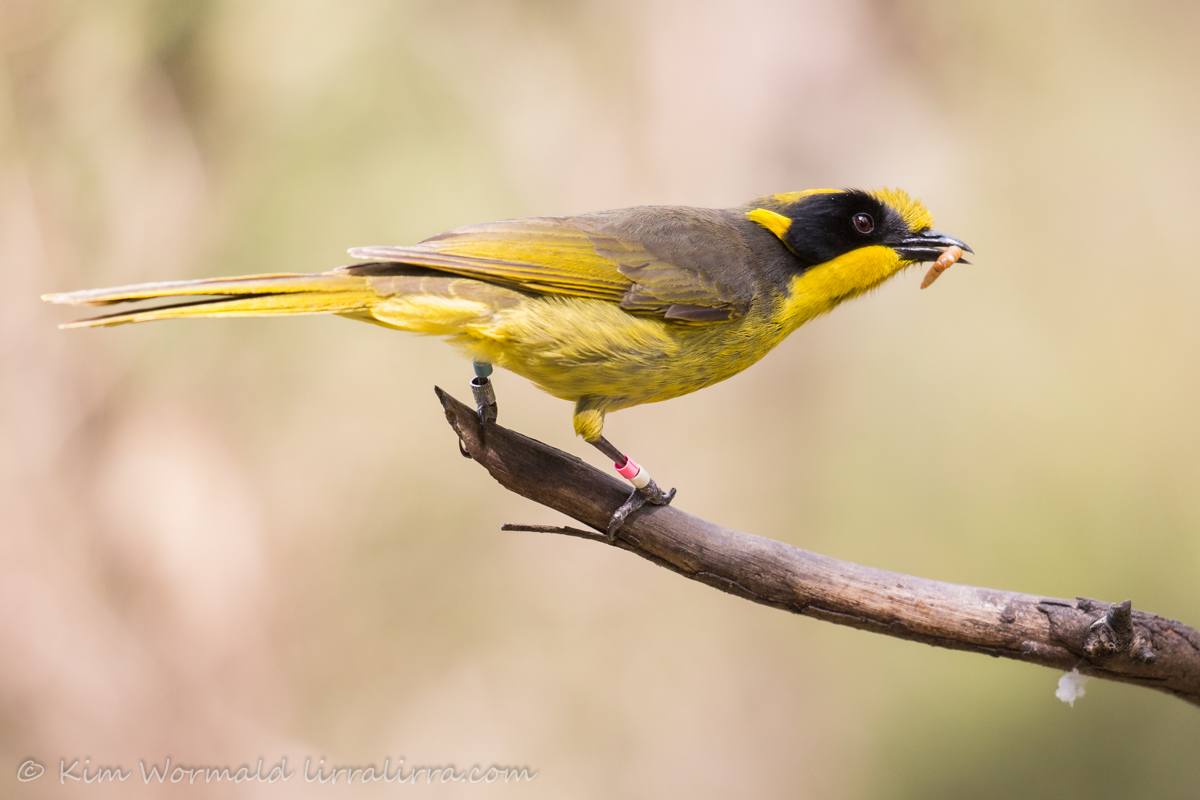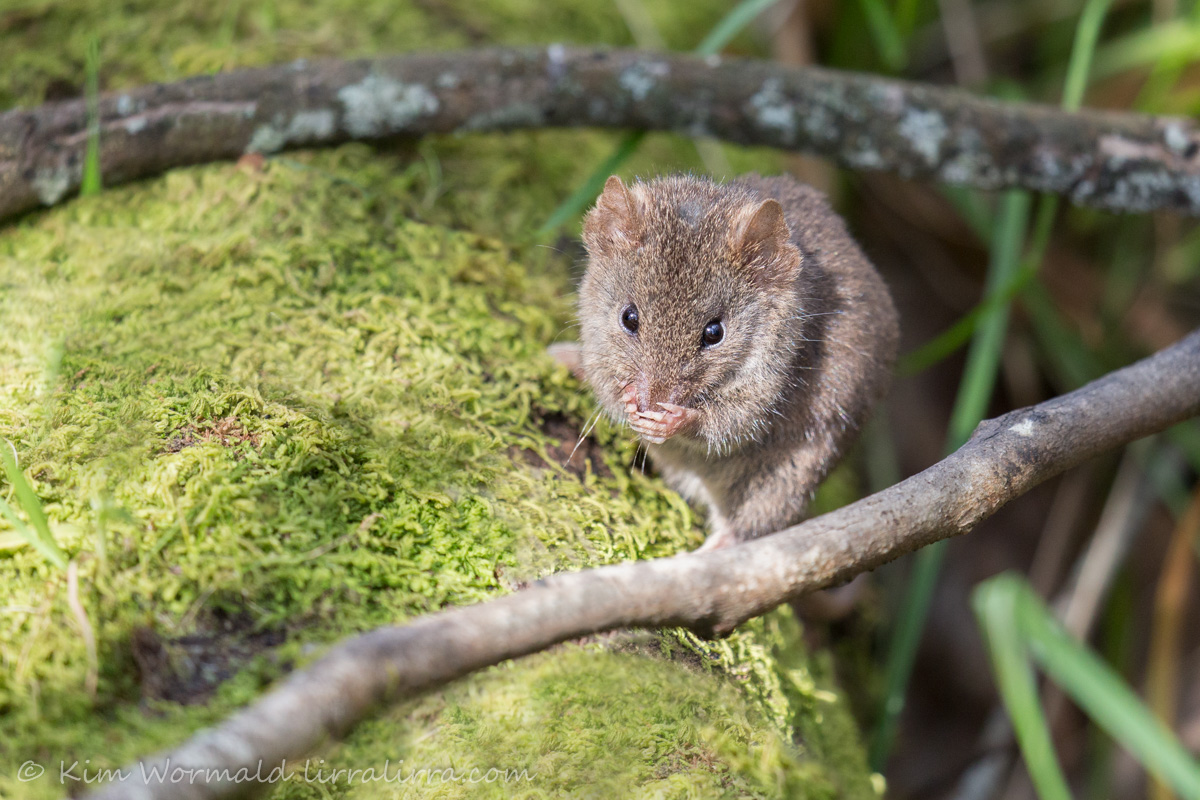One day each fortnight a friend and I (hi Fiona!) continue to volunteer as part of the team providing supplementary food for the critically endangered Helmeted Honeyeaters at Yellingbo Conservation Reserve.
 Helmeted Honeyeater
Helmeted Honeyeater
Virtually every bird is banded and is known by the colours on its right leg; the bird above is Fluoro Pink/White – or could it be Pink/Light Grey – that’s the kind of issue regularly faced in the field as we work on data collection. The blue band on its left leg shows where it hatched, while the metal band is engraved with numbers which identify the bird should one or more of the right leg bands go missing or need to be removed.
During the breeding season we supply mealworms, along with the specialist nectar mix, due to the nutrient requirements of nestlings. Many, probably all, honeyeaters eat invertebrates and feed them to their young.
Dark Blue/Light Orange perched briefly on a prickly currant-bush, Coprosma quadrifida. The prickles can just be seen emerging from the base of the leaves, they are thin, long and deceptively sharp!
 Agile Antechinus
Agile Antechinus
The tiny antechinus, above, are exceedingly cute carnivorous marsupials but they try to raid the food left for the Helmeted Honeyeaters and are known to take eggs and nestlings. Bushes and saplings are kept away from feeding stations as these little guys are as agile as their name suggests and can leap surprisingly long distances. The buckets that we use to carry the food and the clean and empty feed bowls along with other paraphernalia, have special covers to stop the antechinus getting inside; apparently a volunteer had a surprise passenger in his vehicle one memorable day. Photographing birds has many challenges but these little guys are ridiculously speedy and its brief pause was welcome.
Happy birding, Kim
PS My apologies that this post was late and that the site may look different than usual. At 1am on the scheduled morning a heap of site errors appeared from nowhere, at about 3:30am I gave up trying to resolve them. The issues are now in the capable hands of Joy, see links page, or if you live locally treat yourself to a visit to the Mt Evelyn market to see her beautiful artwork.
~ Thank you for visiting and commenting
~ If you would like a weekly email letting you know that lirralirra has been updated please use the ‘subscribe’ box above right


That last shot is amazing! Especially knowing how fast they are – to get that perfect dof and focus is awesome. The honeyeaters are so pretty and how wonderful you get to be a part of their success!
I’m glad you like the antechinus shot Sherry, I was lucky to be following it with the lens as it zoomed around. They are cute little characters, the birds and the antechinus.
beautiful bird and well done on your commitment to its’ conservation. And an exceptional photo of an agile antechinus.
Hi Jacob! I have quite a few blurry shots of antechinus so it was fun to see it pause for a second – they definitely deserve their name!
Thanks David
Wonderful photographs, you have captured the birds and the marsupial so well. Great work both in photography and in conservation. thank you.
Hi Thomas, thank you for your kind comment. I’m so pleased you enjoyed the post.
… and thank you for taking the time to let me know.
It’s great that you guys look after the helmeted honeyeaters, they are lovely birds! Beautiful pictures too. The antechinus is super cute, that must have been quite a shock to have one in the car!
Thank you Alyssa! It would have been a crazy shock. One got into our bucket this week but jumped out pretty quickly.
Thank you for the important work that you do. I hope it is flushed with immense success.
The Honeyeaters are charmers that we can ill afford to lose. Like so many other things on the endangered list.
Love the antechinus too.
Biodiversity is so important isn’t it, I hope it succeeds too, for all of the endangered critters.
We have this one here https://www.flickr.com/photos/koolbee/20232608764 (See map for location) Looks the same but perhaps a different race?
Good work btw.
Indeed Marc, the Helmeted Honeyeater is a sub-species of the Yellow-Tufted Honeyeater you’ve seen.
The “helmet” seen in the photo at the top of this post is one of the distinguishing marks.
I enjoyed your images Marc, thanks for sharing the link. I’ve only rarely seen the Yellow-tufted Honeyeater, they are smaller than the helmeted sub-species, and harder to photograph – congratulations on your shots.